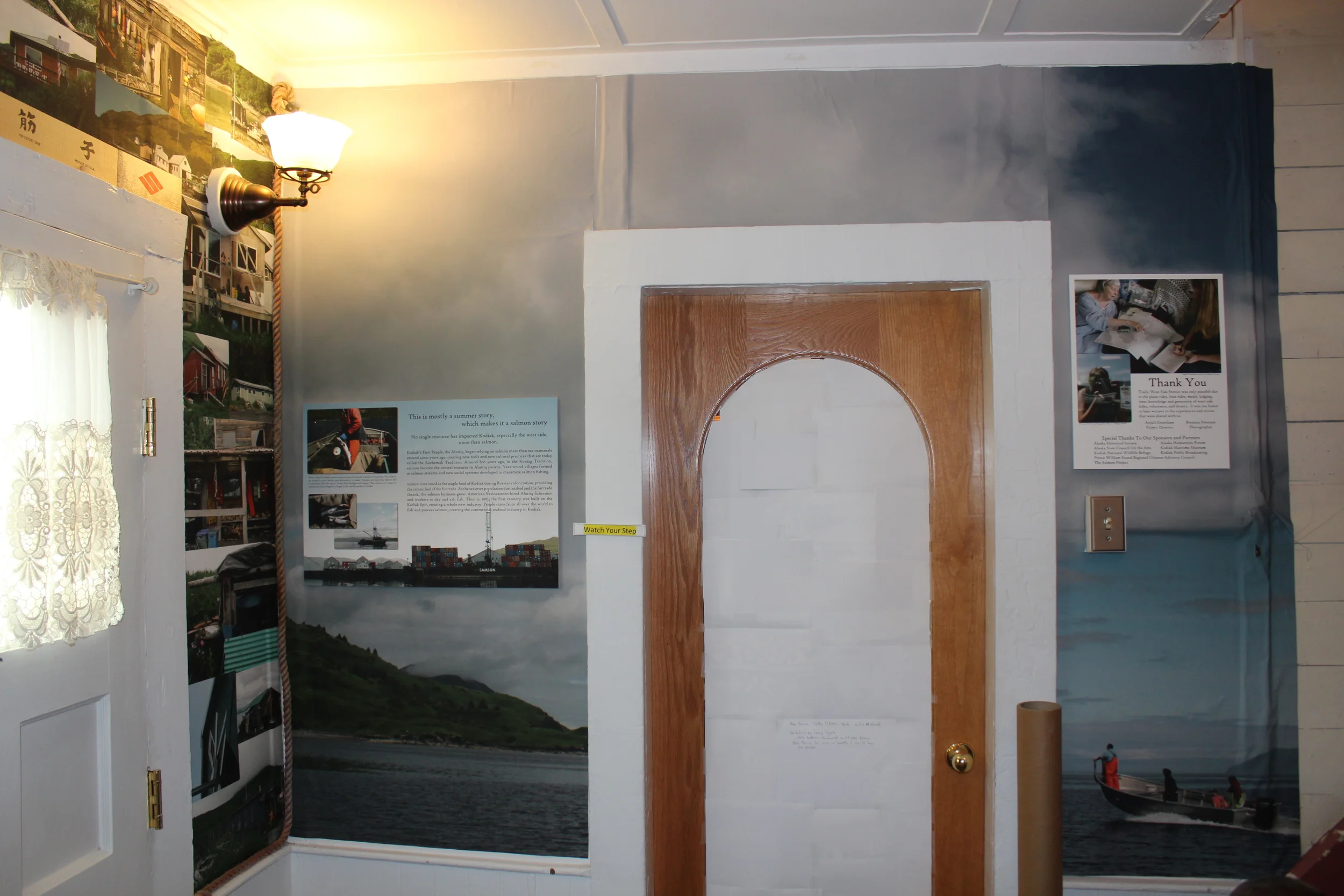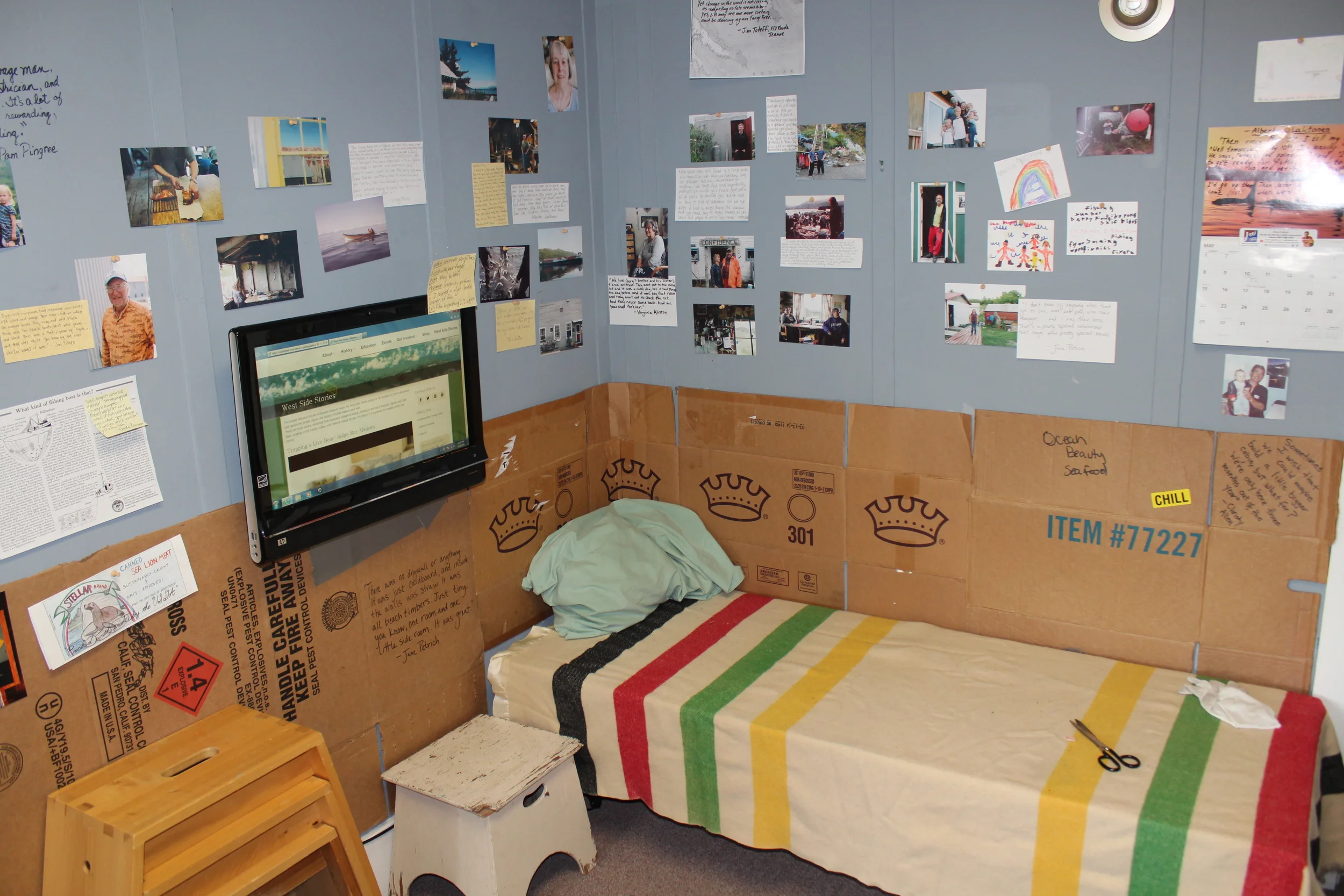Kodiak's Industrial Arts District is an effort to reconsider Kodiak's industrial heart in an artistic light. The project seeks to bring arts and culture to the processing workers, fishermen, and maritime support folks who work along Shelikof Street ("cannery row") and in St. Paul Boat Harbor, honoring their contributions to the community along the way. This project is a finalist for the 2016 ArtPlace America Creative Placemaking Fund.
The project engages visual and performance artists, maritime workers, local government and non-profit partners to create positive interactions along the working waterfront. Murals on the sides of buildings will highlight the people and trades inherent within the district. Infrastructure projects will incorporate art and focus on accessibility and use by those who work in the district. Local artists will create multiple site-specific, permanent, and ephemeral opportunities for art and cultural engagement. This project will deploy arts, culture, and the creation of social capital as a means of addressing the graying of the fleet and maritime workforce recruiting and retention by turning the place where most people spend their time into a place that people really want to be.
West Side Stories is a public arts and humanities project of the Kodiak Historical Society/ Baranov Museum that documents and shares the history and culture of the west side of Kodiak Island through oral history, radio broadcasting, photography, a museum exhibit and public art engagements.
For West Side Stories, I documented the uncommon way of life on the west side of Kodiak Island and engaged the west side community in the telling of the stories. I recorded 21 oral histories of fishermen, cannery workers, and bush residents, many of them at their fish camps and bush homes. From these oral histories I produced "West Side Stories," a radio series that broadcast on public radio. I worked with photographer Breanna Peterson, who photographed the interview subjects and west side fish camps, canneries, and lodges, creating a stunning visual record of the region. Over the summer, I developed "story kits" which were delivered via fish boats to fish camps and canneries. These story kits included prompts and materials for writing and art projects, so that west side residents could craft their own "west side stories." The project culminated in the creation of illustrated oral history transcripts, the production of short films using the oral histories and photographs and an exhibition at the Baranov Museum that depicts fish camp.






The Alaska Historic Canneries Initiative is a grassroots project of the Alaska Historical Socity to document, preserve and educate about the history of Alaska's seafood industry.
I founded this project in 2013, recognizing that historic canneries across Alaska. Hundreds of processing plants once dotted Alaska's coastline, yet only two are listed on the National Register of Historic Places. I built this project from the ground up, recruiting volunteers, leading fundraising initiatives to pay for the project, envisioing and now managing the small grant program that is funding cannery history projects around the state, and promoting the project through presentation, radio broadcasting, and other public engagement opportunities.
Project partners and funders are the Alaska Historical Commission, Alaska Sea Grant, Alaska Seafood Marketing Institute, and others.


